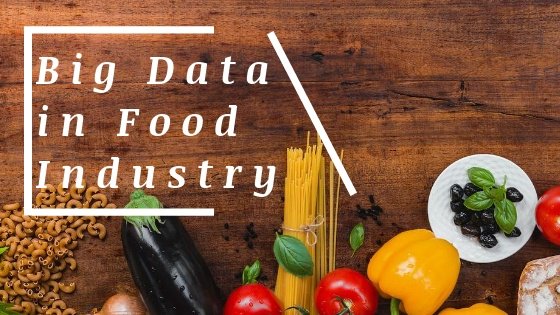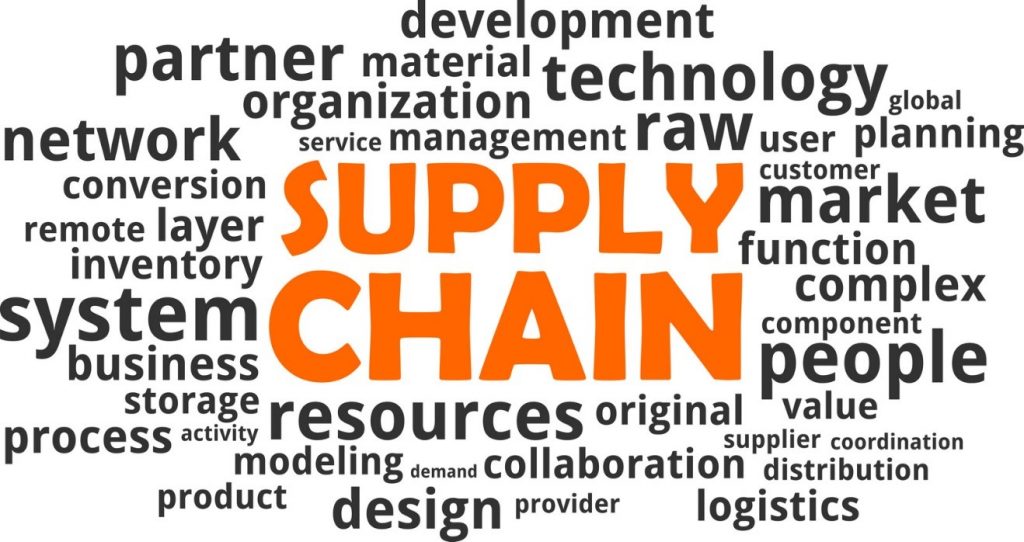Toggle navigation

It goes without saying that the food industry is one of the most vital segments globally. Even during the times when a pandemic has ravaged the economy, the food industry has stayed relevant and will continue to do in the foreseeable future. The industry is worth US$ 610 billion in 2021 and forecasted to grow annually at 6.58% during 2021-2025. (Source: Statista).
This simply means there is a lot of data waiting to be processed and analyzed. This opens an opportunity to the stakeholders in this space-food retail outlets, wholesalers, retailers, and restaurant owners-to leverage technology for gaining visibility into various aspects of the food value chain and streamline business functions.
Big data analytics can play a key role here. Analytical solutions can be capitalized upon to gather, study and analyze the data emanating from the food industry and track market trends and consumer behavior, reduce wastage and bolster revenue. Organizations with insights into various aspects of their operations have a serious advantage over their competition.
In this blog, we will talk about the applications and use cases of big data analytics in the food industry and discuss how prominent brands are harnessing the technology to add value to their business.

Just around a decade ago, only a handful of players in the food industry would offer home delivery. That has changed in recent years, thanks to modern technologies, particularly mobile apps and the data they gather. Today, when almost every other food outlet offers home delivery, getting the food delivered on time has become the most important responsibility of any business.
Food companies are relying on big data analytics services to monitor the elements affecting delivery including traffic, weather, temperature, time of the day, route, etc. in order to calculate the time needed to reach a specific destination. They also use analytical solutions to estimate the quality of food and ensure that perishable items reach their destination in good condition.
FreshDirect, an eminent online grocery delivery player based out of New York, has built an impressive transport and delivery mechanism, all thanks to analytics. It has over 300 vehicles equipped with advanced GPS systems and sensors that monitor product status and environmental conditions when the items are in transit.
As a result, the company receives timely alerts, notifications, and warnings that ensure the products reach their destination safely. Owing to its reliable service, FreshDirect now holds a whopping 68% share of the online grocery market of New York City.

Sentiment analysis is the study of emotions conveyed from a written text that may be in the form of a tweet, an email, or a review. Depending on how it has been analyzed, the text can be classified as positive, negative, or neutral. The technique uses a range of tools-hashtags, tone, context-to identify the emotion expressed in a given piece of writing.
Sentiment analysis has opened avenues for businesses to estimate what a customer has written about their product/service/organization and make decisions aimed at enhancing customer satisfaction. Food delivery companies increasingly count on sentiment analysis to study customer emotions. So, if there are lots of negative reviews on any of their product/service, the company can corrective action before the damage escalates.
The technique has been particularly useful for giant food retailers such as KFC and McDonald’s. These players collate customer data from different sources such as social media (e.g. Twitter or Facebook) to determine how they feel about their products and use this information to tweak their menu or offer extras with an order. While KFC uses this data to study how customers perceive new products, McDonald’s leverages it to upsell products.

Quality is a major factor that drives the success of food supply chains. Temperature-sensitive products such as milk, vegetables, fruits, and seafood can get spoilt if the temperature at which they are kept fluctuates. This becomes especially significant when these perishables need to be transported over a long distance.
To deal with this issue, food logistics companies use IoT-based sensors in warehouses and delivery vehicles that collect food-related data and transfer it to big data systems that process the data in real-time, thereby helping in monitoring the supply chain. Such an arrangement allows the timely replacement of spoilt products. Companies can examine the raw materials as well as the finished products well in time to avoid unforeseen issues.

As per a study, the consumer product and retail industry loses close to 3.5% of their revenue on account of inefficiencies in the supply chain. Big data analytics services allow companies to use IoT devices such as barcodes and RFID sensors to track the food items from the time they are harvested until the time they reach the supermarkets and finally at the customer’s table, most likely in a processed form.
By analyzing the data from these sensors, businesses can optimize their supply chains-reduce wastage, implement preservation programs and offer fresh food to the customer. With enhanced visibility of the entire supply chain, they are equipped to deal with the deficit or surplus of an item at any point in time.
These businesses can also track contaminated foods or meats from their source to wherever they are currently stored. This minimizes the risk of spread of animal-borne diseases that have become common these days.

Businesses rely on application logs to record the daily activities of systems and gather critical data about the overall well-being of their infrastructure. This helps them maximize their uptime and enhance operational efficiency.
For instance, for a restaurant to run properly, all its systems including POS systems, kiosks, order management systems, kitchen display systems, inventory management systems need to be in order. But collating all this data and then mining meaningful information from the same would be an uphill task, if big data solutions weren’t there.
Today, with big data systems at their disposal, restaurant owners can distill useful information from raw log files corresponding to various systems used at their place. This way, they can identify issues that hinder the supply chain from functioning at maximum efficiency and detect vulnerabilities before they grow into major problems.

Market basket analysis is a technique that predicts the future purchase decisions of customers by studying their past buying patterns and preferences. Food retailers and restaurants derive insights from what a customer has purchased in the past and what kind of items are lying in his shopping cart. Accordingly, they can tailor their deals to match the needs and preferences of the customer.
For instance, if it has been found that a customer buys eggs in combination with flour and sugar in 4 out of 5 purchases, then market basket analysis will probably predict that these items were bought for baking and the customer may see baking-related items in his recommendation list (if he buys online) or find these items placed together on adjacent shelves (if he buys from a retail store). This way, he can be enticed to purchase more items that he did not intend to buy in the first place.
Market basket analysis helps food retailers cross sell in many ways: optimize store layout to augment sales, convey customized messages to the customer, maintain the right combination of items in the inventory, and do much more.

Popular food chains and restaurants these days have developed their mobile apps through which a customer can reserve a table, place an order, browse the menu, view the interiors of the restaurant, and do much more. These apps allow these companies to collect a lot of customer data and deliver a highly personalized service.
McDonald’s is a case in point. The food retailer capitalizes on big data analytics services to personalize the experience of its drive-through customers. It takes into account three main factors-restaurant design, menu, and type of customer-to make its customer service as seamless as possible. Analytical tools help the company study the behavioral patterns of individual customers and provide the latter with the best possible experience.
Delve into a World of Endless Possibilities with Data-Driven Insights
In light of how the digital is reshaping the various facets of our lives, it comes as no surprise that big data will fundamentally change how we order food, how we eat or, for that matter, make any other food-related decision. The aforementioned examples are just a glimpse of how big data is making inroads into the food industry. Big data analytics has already opened up endless opportunities in the food space, and as technology continues to advance, many more use cases will emerge. This will translate into better food, better service, and better experience for the entire food ecosystem.
At Cyfuture, we offer top-of-the-line big data consulting services to organizations in the food industry and elsewhere. If you need any such services, let us know. We will be glad to help you!